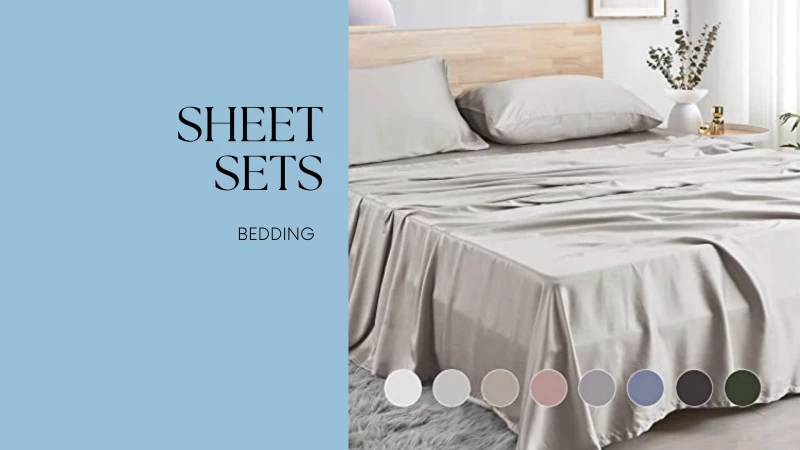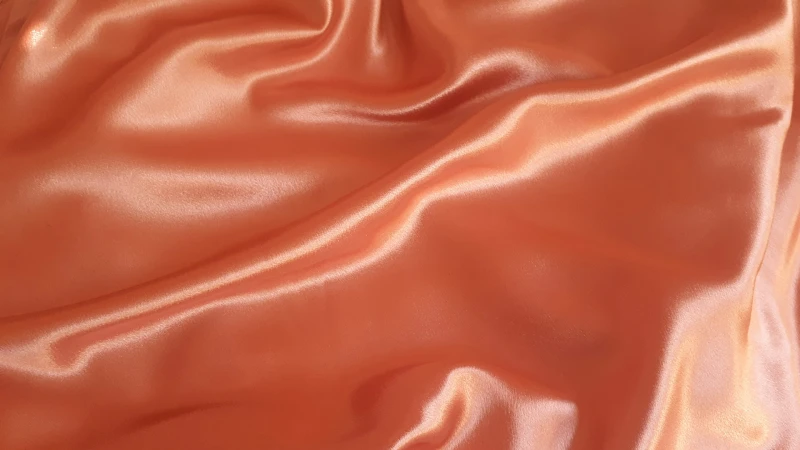Disclosure: This post may contain affiliate links, meaning we get a commission if you decide to make a purchase through our links, at no cost to you. Please read our disclosure for more info.
If you’re on the lookout for new bed sheets, you could be walking into a whole new world of terms you’re unfamiliar with.
What the heck are thread counts? Why does the weave matter? Did you think that “ply” only applied to toilet paper?
A whole lot more than you may expect goes into making high-quality bedding. We’re going to get down to the basics of bedroom décor and break down how to shop for the best bedding.
In This Post:
What Are Thread Counts?
Thread counts are a measurement of the number of threads in one square inch of fabric. It lets you know how tightly the fabric is woven.
Manufacturers calculate thread counts by adding the warp and weft threads in a certain area. This means that they add how many threads run lengthwise and how many run widthwise.
If your sheets have 110 warp threads and 110 weft threads in a square inch of the fabric, it has a thread count of 220. Many people think they should use thread count as a way to indicate how soft the fabric feels.
Companies that market bed sheets use thread count as a selling point to indicate that their sheets are of a higher quality than their competitors. What feels more luxurious than knowing your room is decked out in high thread counts and exotic ceiling fans?
The truth is a little more complicated than that.
What Is the Best Thread Count?
In truth, there is no “best thread count.” The quality of your sheets depends on the quality of the threads, not the thread count. In fact, each type of fabric has a different ideal thread count.
At the very least, your sheets should have a minimum thread count of 200. Anything less than 200 is loosely woven and won’t feel as soft.
Both the type of fabric and how it is woven will make a difference in what thread count to look for.
For example, percale is a “plain weave” pattern. It has a one over, one under pattern. Percale sheets should have a thread count between 180 and 200 to be considered average quality.
On the other hand, to achieve an average quality set of sateen sheets, they must be tightly woven. They would have a thread count between 250 and 300.
Here are the thread counts for high-quality fabric depending on the material:
- Linen: 80-140
- Cotton: 200-400
- Egyptian Cotton: 300-400
- Bamboo: 300-500
As a side note, linen sheets don’t typically list the thread count on the packaging. High thread counts should be avoided when buying linen sheets.
Also, many popular materials for making bedsheets don’t use thread counts to measure the quality. For example, silk is measured in a unit called a “momme.” This is a measurement that looks at how much a 45 inch by 100-yard piece of silk weighs.
Microfiber, jersey, and flannel are measured in grams per square meter, or GSM.
Does High Thread Count Mean Better Sheets?
In short, no. A higher thread count doesn’t always mean more comfortable or higher quality sheets. This correlation between a high thread count and more comfortable sheets usually tapers off at a certain point.
For most fabrics, once you’ve hit the 600 thread count marker, generally the only noticeable difference will be the price tag. High thread counts, in the 600-800 range, won’t feel any softer or last any longer than the sheets in the 200-600 range.
Plus, if manufacturers packed more than 800 threads in a square inch, your fabric would be bulky and would stifle airflow.
Important Aspects of Good Bedding
Now you understand the basics of thread counts and how to spot good sheets based on that number. But, as we mentioned, there is so much more that goes into making high-quality bedding. Fabric material, weave pattern, and ply count all matter too.
Fabric Material
For higher-quality bed sheets, look for labels that tell you that they were made with extra long fibers. For example, long-staple or extra-long-staple cotton ensures that the fibers won’t stick out from the weave and become uncomfortable.
Another good option for cotton sheets is combed cotton. Cotton is considered “combed” when the manufacturers remove short fibers from the cotton before they spin it.
In general, all-natural fibers will have a much better feel than anything made from polyester.
Weave
There are two different kinds of weaves: plain and satin.
In a plain weave, the horizontal and vertical threads alternate one after the other throughout the weave. Think of it like a checkerboard pattern.
With a satin weave, the weft threads lie along four warp threads at once. This allows there to be more vertical threads in each weave and creates a much softer, smoother sheet.
Sheets with a plain weave are great for people who get overheated overnight. The weave allows for plenty of airflow to help keep you cool.
Sheets with a satin weave are a little better for colder nights. They’re more tightly woven and they feel heavier and more sturdy.
Ply Count
Single-ply sheets are sheets with one strand of yarn per thread. These are more high quality because they use strong, fine threads to create their weave.
Multi-ply sheets use more strands because the threads are more prone to becoming brittle and breaking. They feel more coarse and thick.
Finding the Best Bedroom Decorations
Who knew that buying bed sheets would be so complicated? When it comes to finding the best quality sheets you can afford, there is a lot of information to consider. Just remember that high thread counts and high price tags don’t always mean a better sleeping experience.
At the end of the day, you need to be happy with the decision you made. If you find that you’re more drawn to the way a lower thread count feels, there’s no shame in using them! It all depends on your personal preferences and what makes you comfortable when you rest your head at night.
For more design tips and tricks, keep reading!




